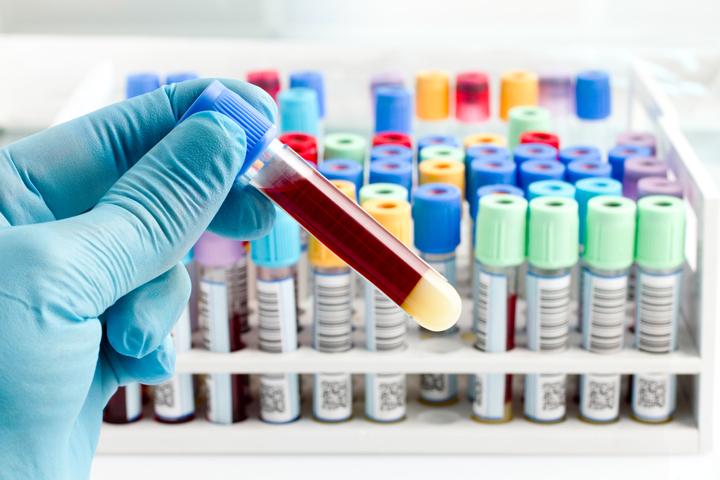(BPT) – In the United States, chronic kidney disease (CKD) is a growing problem,1 with 26 million American adults currently living with the disease and millions of others at increased risk for developing the disease.2 As kidney disease progresses, your damaged kidneys can no longer adequately filter wastes or properly balance fluids and minerals, ultimately resulting in kidney failure and the requirement for dialysis or a kidney transplant.2,3 Many of the approximately two million people throughout the world who are on dialysis will also develop secondary hyperparathyroidism (HPT),4,5 an initially “silent” and asymptomatic disease that can be associated with significant clinical consequences.6 Because kidney disease may not have any symptoms and can affect anyone,1,6 it is important to take steps to keep your kidneys healthy. This includes getting your blood and urine checked and managing conditions such as diabetes, high blood pressure, and heart disease.1,7
Learn these five facts about CKD and what may be going on beneath the surface. If you or a loved one is diagnosed with CKD or may be at risk for developing the disease, talk with your healthcare provider.
1. CKD is common among U.S. adults.7

One in ten adults has CKD,7 and the disease affects approximately 26 million adults in the U.S.2 The risk of developing the condition increases with age, and is most common after age 70.7
2. However, you may not notice any symptoms of the disease.6,7

People with early-stage CKD may not notice any symptoms.6,7 The disease is diagnosed through specific blood and urine tests and is managed through medicines and lifestyle changes to help decrease the risk of further kidney damage.7
A blood test checks your glomerular filtration rate (GFR), which tells how well your kidneys are filtering.8 A urine test checks for albumin in your urine, which is a protein that can pass into the urine when the kidneys are damaged.8
3. How do I know if I’m at risk for developing CKD?

Adults who have diabetes, high blood pressure or both are at a higher risk for developing CKD than those without these diseases.7 Additional risk factors include cardiovascular disease, obesity, high cholesterol, lupus, and a family history of CKD.7
4. The kidneys are essential for survival.

End-stage renal disease is Stage 5 of CKD, and the point at which kidneys no longer function well enough to enable a patient to survive unless the work that the kidneys normally do is replaced by dialysis or a kidney transplant.5,9 In the U.S. alone, approximately 468,000 people are on dialysis.3
5. What else can be beneath the surface?

In fact, 88 percent of CKD patients on dialysis will develop secondary HPT,10 a chronic disease which occurs when the parathyroid gland secretes too much parathyroid hormone (PTH) in response to decreased renal function and impaired mineral metabolism.5,6 Secondary HPT often appears in people in Stage 5 of CKD.6
African American CKD patients are more than twice as likely to develop secondary HPT as Caucasian CKD patients.5
Inadequately treated secondary HPT can have clinical consequences.6 Therefore it is important to promptly diagnose secondary HPT and begin treatment as necessary.11
References
1 National Institute of Diabetes and Digestive and Kidney Diseases. Kidney Disease Basics. www.niddk.nih.gov/health-information/health-communication-programs/nkdep/learn/causes-kidney-disease/kidney-disease-basics/Pages/kidney-disease-basics.aspx. Accessed January 17, 2017.
2 National Kidney Foundation. About Chronic Kidney Disease. www.kidney.org/kidneydisease/aboutckd. Accessed January 17, 2017.
3 National Kidney Foundation. Fast Facts. Available at: https://www.kidney.org/news/newsroom/factsheets/FastFacts. Accessed January 17, 2017.
4 National Kidney Foundation. Global Facts: About Kidney Disease. Available at: https://www.kidney.org/kidneydisease/globalfactsaboutkidneydisease. Accessed January 17, 2017.
5 Joy MS, et al. Outcomes of secondary hyperparathyroidism in chronic kidney disease and the direct costs of treatment. JMCP. 2007;13(5)397-411.
6 Tomasello S. Secondary Hyperparathyroidism and Chronic Kidney Disease. Diabetes Spectr. 2008;21(1)19-25.
7 Centers for Disease Control. National Chronic Kidney Disease Fact Sheet, 2014. Available at: http://www.cdc.gov/diabetes/pubs/pdf/kidney_factsheet.pdf. Accessed January 17, 2017.
8 National Kidney Foundation. First Steps After Diagnosis of CKD. Available at: https://www.kidney.org/kidneydisease/recentlydiagnosed. Accessed January 17, 2017.
9 American Kidney Fund. Kidney failure/ESRD. Available at: www.kidneyfund.org/kidney-disease/kidney-failure/. Accessed January 17, 2017.
10 Data on file, Amgen; 2016.
11 Saliba W, El-Haddad B. Secondary hyperparathyroidism: pathophysiology and treatment. JABFM. 2009;22(5):574-81. doi: 10.3122/jabfm.2009.05.090026.






